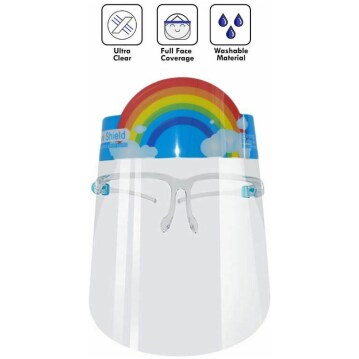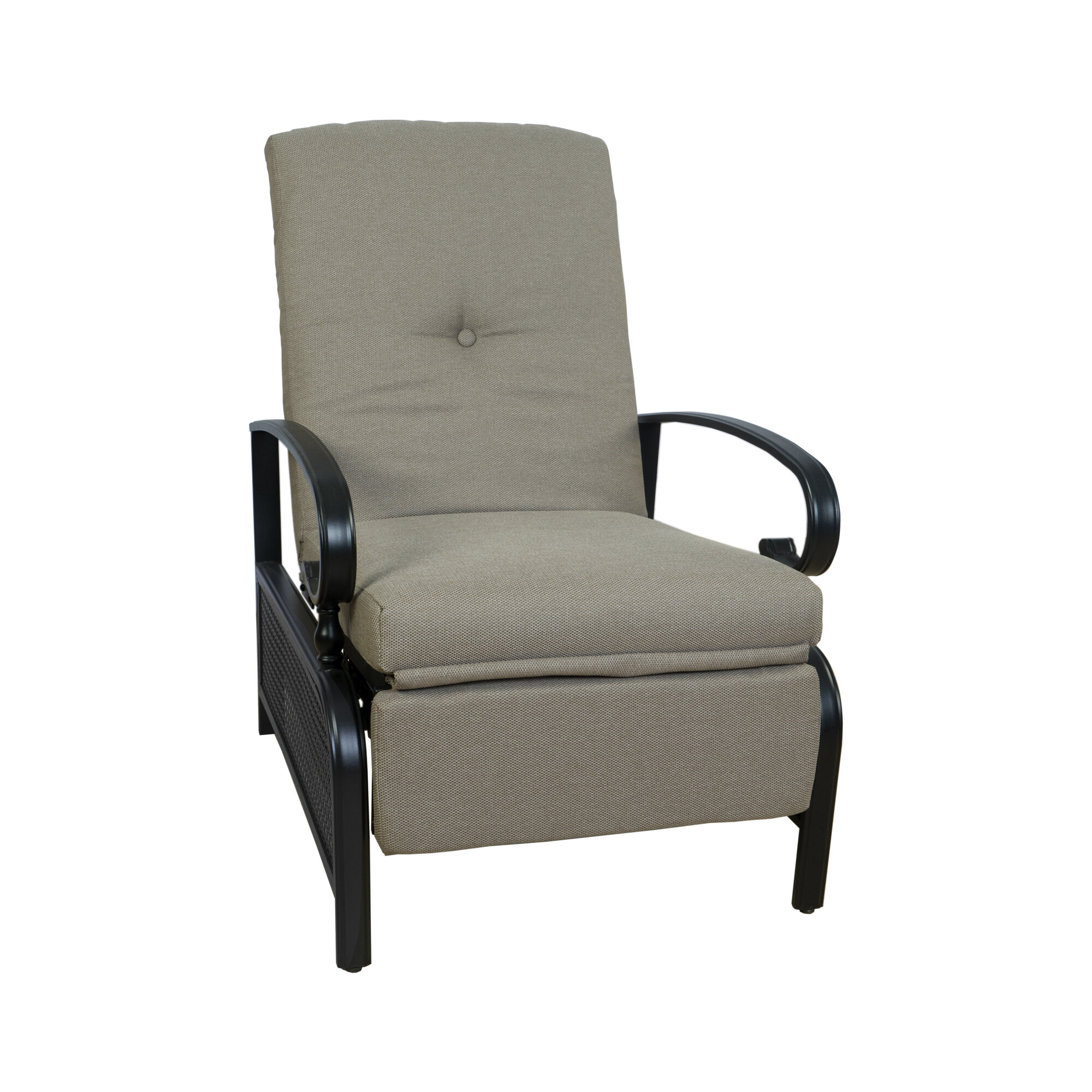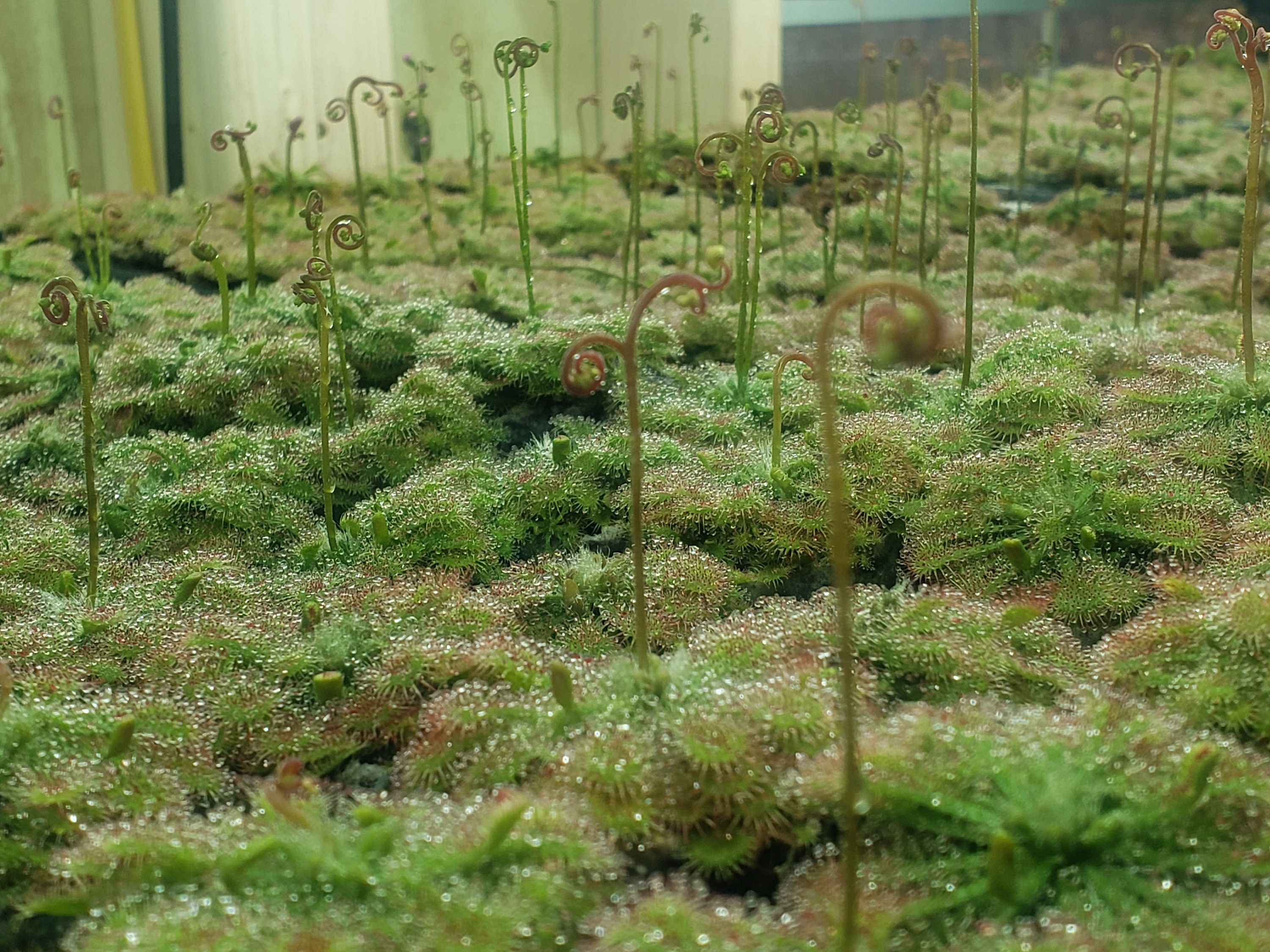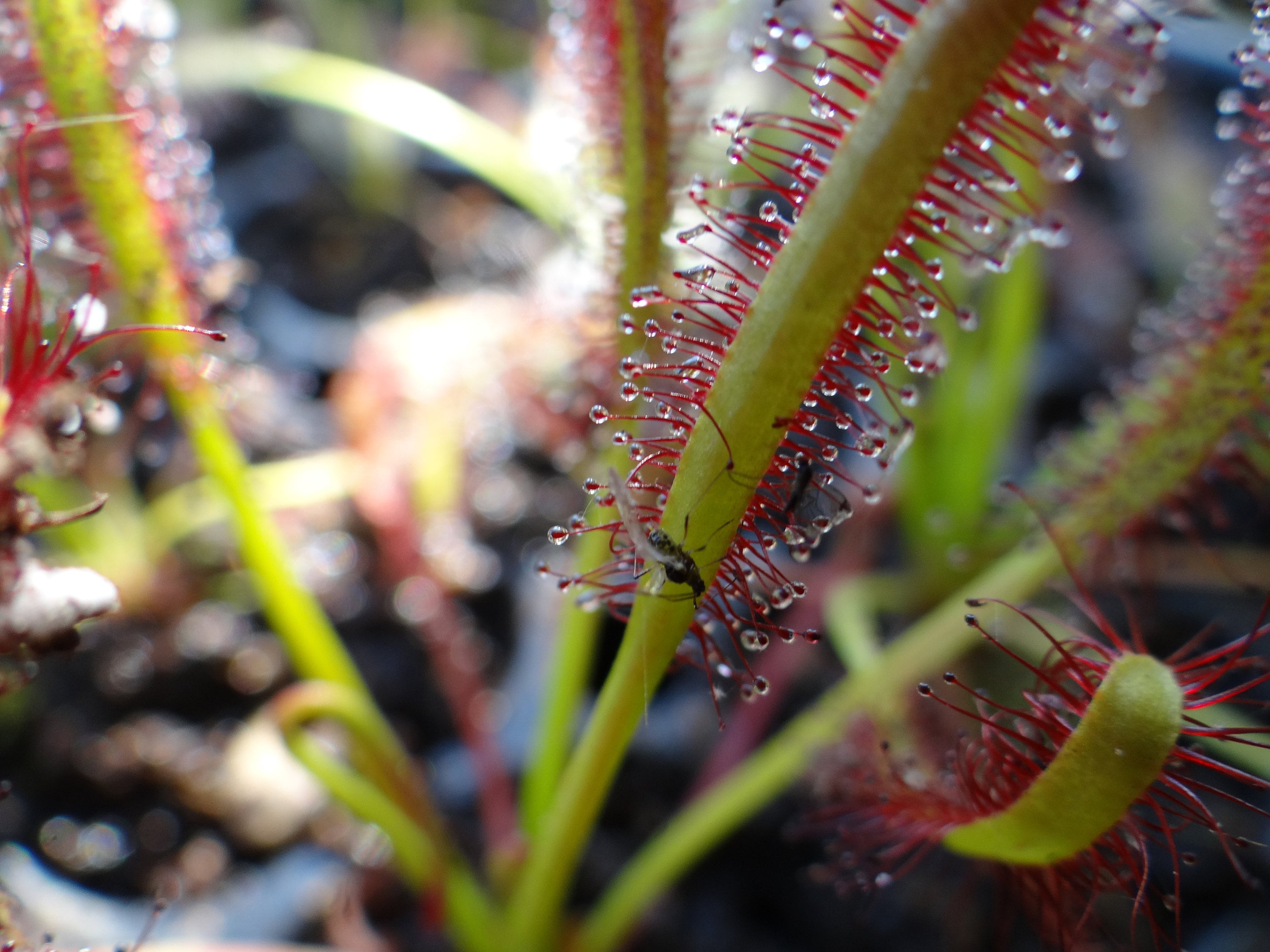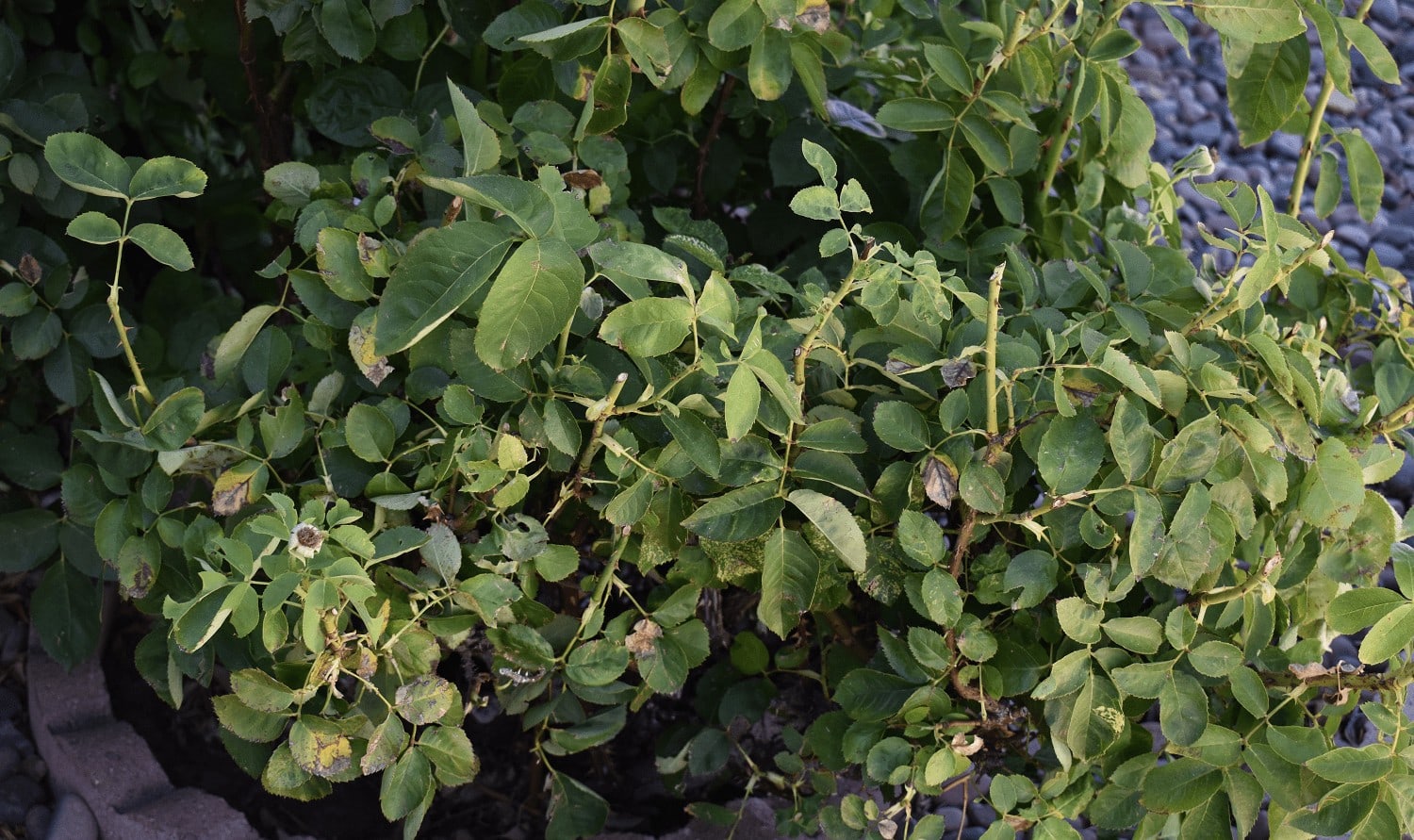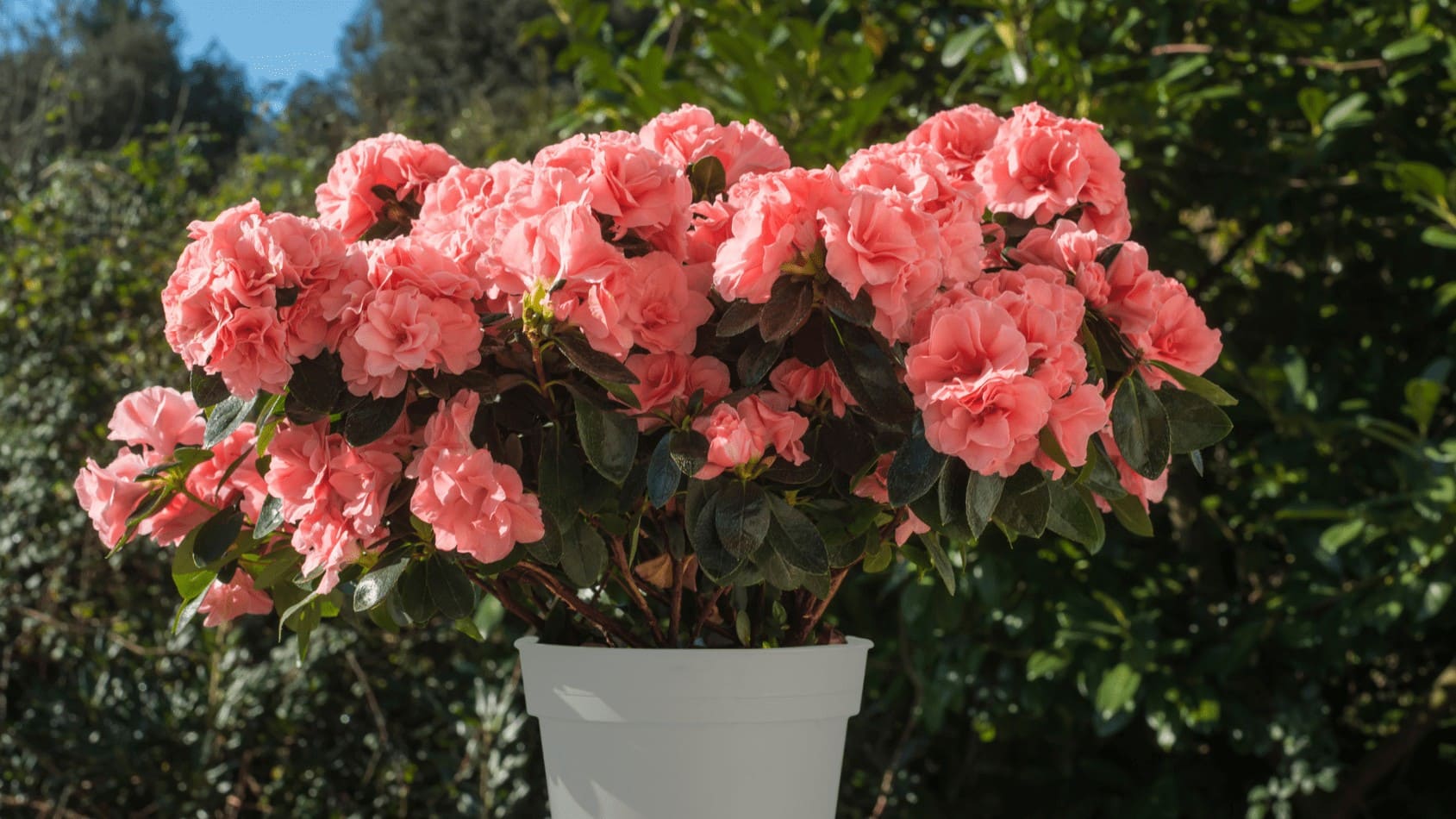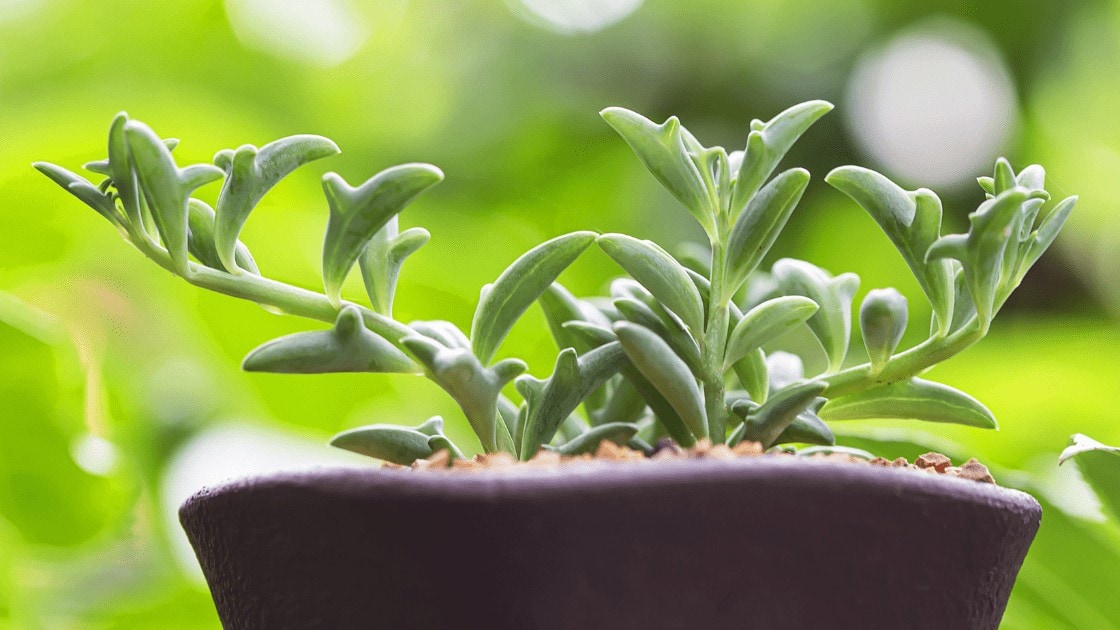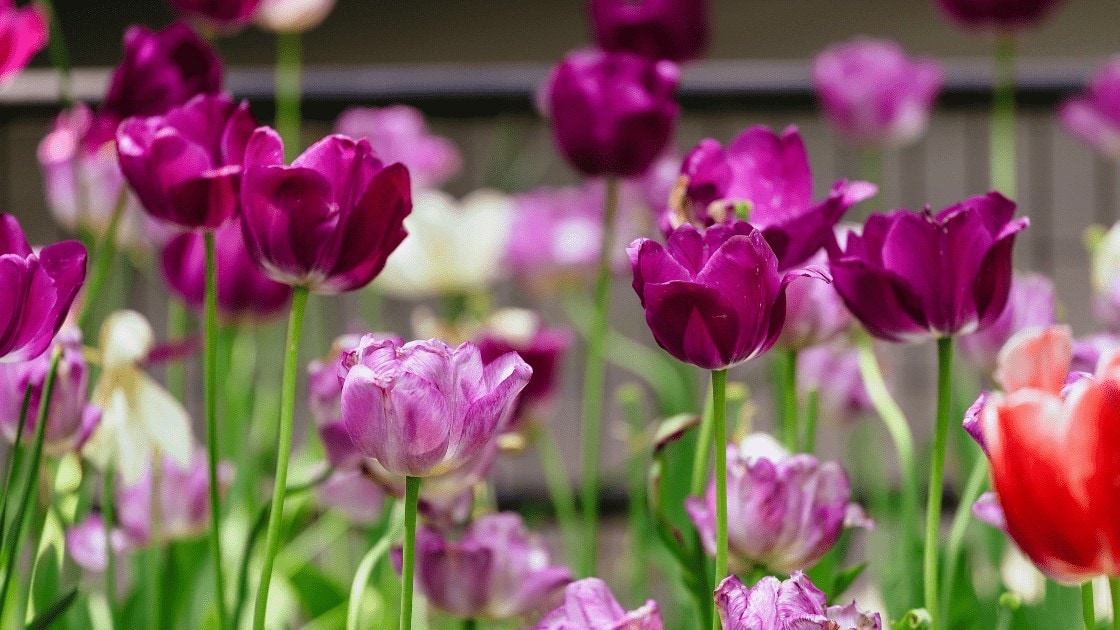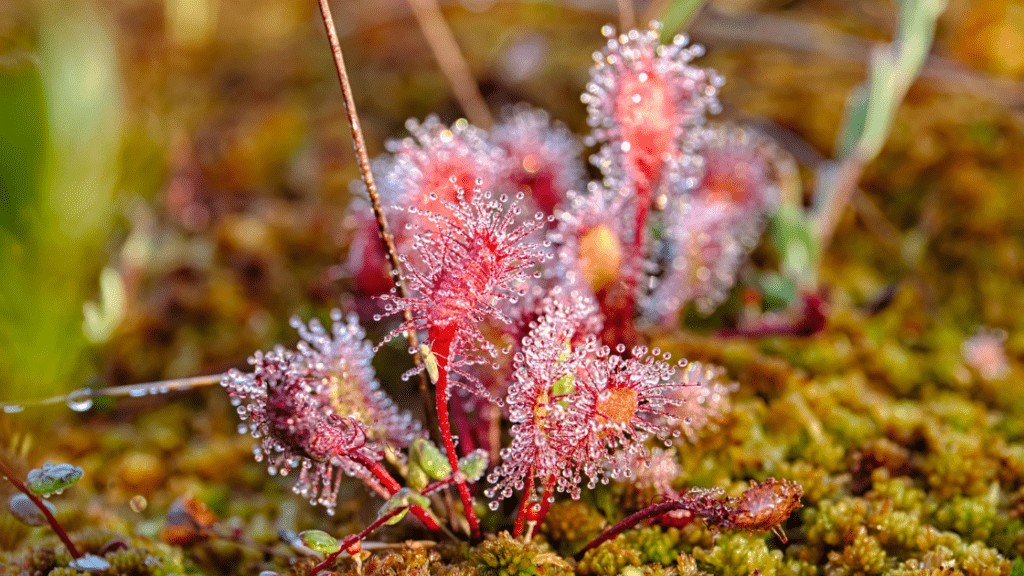
There are around 600 known carnivorous plant species and about one third of them belong to the Drosera genus. Drosera species all have leaves covered in tiny, sticky droplets which they use to capture small insects. In this article, we will explore the “Sundew, and how to properly care, feed, and propagate them.
Sundew droplets look like dew, which is where the common name of Drosera – ‘sundew’ comes from. Sundews are one of the fastest growing carnivorous plants – unlike Venus flytraps which can take up to 4 years to fully develop from seed, most sundews reach maturity in only a few months.
Their seeds are also relatively easy to sprout, which is part of the reason why they are such a common carnivorous plant that is so easy to get a hold of.
Browse our Affiliate Products
Description and Characteristics
Sundews are one of the most common and widely spread carnivorous plants – they are native to at least half of the land area of the world and there are more than 200 different species.
Although all sundew species have sticky leaves, they have different characteristics.
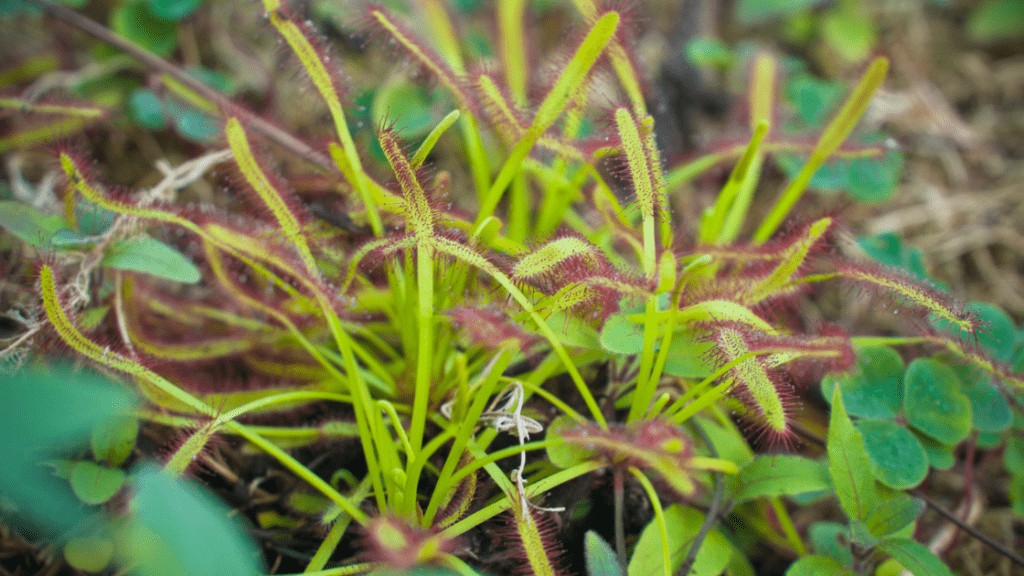
Drosera capensis is probably the most commonly sold sundew variety – it has thin, long green leaves. Most other drosera species, like the popular Drosera aliciae have smaller, oval leaves that take on a more reddish color.
What Makes Sundews Carnivorous?
Sundews have leaves covered in short hairs. Each hair secretes a sticky liquid that forms a tiny dew-like drop.
Check out this YouTube video of a sundew catching a fly.
When a tiny insect lands on the surface of the hairs, it gets stuck and is eventually consumed by the plant, providing a significant amount of nitrogen, phosphorus and other nutrients. The hairs, or tentacles of all drosera species are able to move – as soon as an insect is trapped, nearby tentacles bend towards the prey, decreasing the possibility of the insect escaping. The leaves are also motile and start to fold up, covering the insect.
This process takes as little as a few minutes. The sticky liquid secreted from the hairs contains digestive enzymes, similar to the ones we have in our stomach – they split the proteins of the insect into individual amino-acid, making the insect water-soluble, after which it can be easily absorbed by the tentacles and metabolized by the plant.
Virtually all plants in nature also consume insects and small animals, but they do it much more passively – when insects die on the surface of the soil, they are eventually degraded by soil bacteria and are absorbed by the roots.
But because carnivorous plants live in nutrient-poor, peat-based soils, they have evolved much more direct ways of capturing and consuming prey.
How Long Do They Live For?
Sundews are perennial plants and they can live practically indefinitely if you repot them every few years.
However, just like most other carnivorous plants, they do have certain humidity requirements, require artificial feeding and are sensitive to seasonal fluctuations in temperature and day length.
Because of that, it’s not easy to successfully keep carnivorous plants alive for many years, but it can be done. Of all the carnivorous plants, sundews are probably the easiest ones to take care of.
Sundew Care, Growth Requirements and Propagation
Sundews are relatively easy to care for, as long as you use distilled water to water them, keep the humidity up and provide them with plenty of light.
Because sundews are a wide-spread genus, different species have different temperature, light and humidity requirements, so it’s best to first identify the exact species of Drosera you are caring for.
Do They Do Better Indoors or Outdoors?
Certain sundew species do very well when placed outdoors during the summer, but care should be taken to provide some light shading and not stress the plant if its used to growing indoors.

Temperate Drosera species, like Drosera intermedia are used to warm weather and can be grown outdoors if you live in a USDA zone below 10.
Proper Lighting
Lighting is an often overlooked aspect when it comes to growing sundews.
Many people focus on providing the plant with high humidity, but ignore the light intensity. If you don’t provide the plant with enough light, it will lose its reddish coloring and will eventually stop producing dew.
Bright, indirect light is recommended – placing the plant on the windowsill of a bright, non-south facing window is usually best. Artificial LED lights are another great option – because drosera plants have a small canopy area, they do very well under low-power grow lights.
As low as 5 watts per plant can be plenty if the light is positioned about 5 inches away from the leaves.
What Type of Soil Do They Require?
Sundews are known for requiring a peat-based, nutrient-poor, acidic substrate. Usually, a mixture of peat moss and perlite is used. If you’ll be making your own soil mix for Drosera, it’s important to make sure that the peat moss is natural and fertilizer-free. For more information about which soils to use, click on our article here. What Are The BEST Potting Soils for Every Type of Plant?
Feeding and Fertilization
Drosera plants shouldn’t be fertilized, but they should definitely be fed.
Outdoor-growing plants may catch tiny insects on their own, but indoor-growing sundews should be fed manually. This is the most fun aspect of caring for carnivorous plants, but you shouldn’t overdo it.
It’s best to give live insects to the plant, as the movement of the trapped pray further stimulates the tentacles to move and start the digestion process. However, many people choose to use fish pellets or other non-living organic matter to feed their plants – this will work fine.
Unlike the Venus flytrap which requires movement of the pray in order to initiate the digestion process, sundews will start digesting any nitrogen and phosphorus-rich organic matter that comes into contact with the tentacles.
The feeding frequency of carnivorous plants greatly depends on the species – the popular Drosera capensis will not usually die if it goes a long time without food, but a few other species, like D. burmannii will.
Because the tiny food fragments which the leaves will accept as food are very difficult to weight and measure, common sense should be used instead – just feed the plant at regular intervals, alternating the leaves and observe its growth and development.
It’s best to give each leaf a short resting period before giving it food again.
Watering Frequency and Top vs. Bottom Watering
Sundews are one of the few plants that don’t really have problems with waterlogging – their roots don’t absorb a lot of oxygen from the air and most of the aerobic metabolism happens in the leaves.
The peat moss substrate in which sundews grow can be kept perpetually wet, by frequently pouring some water in the pot tray and letting it be absorbed (bottom watering).
It’s a good idea to provide an over-sized tray for the pot. This will,
- Provide a larger water reserve and reduce the watering frequency required and
- Increase the water humidity around the whole plant, which is desirable for most species.
What Water to Use
Sundews are known for being sensitive to solutes accumulating in their substrate. Regular tap-water may contain as much as 200 ppm of calcium and as the water evaporates from the top of the soil, the dissolved salts remain in the substrate and accumulate.
For this reason, distilled or rain water should be used for watering. You can use a cheap PPM meter to make sure that the water you use is ‘soft’ enough – in some areas, the PPM rating of tap water can be as low as 50 PPM making it suitable for watering carnivorous plants.
Still, a flush with distilled water may be provided once a month to dissolve the solutes accumulated in the substrate.
Is Repotting Necessary?
Repotting is usually required only when the sundew grows too large and the roots start growing out of the drainage holes. Repotting is a good opportunity for propagating your sundew by division.
Annual Growth Cycle and Dormancy Period
The popular, long-leaved D. capensis grows fine without a dormancy period, but a few other species may require it.
The dormancy period of most sundews is initiated by decreasing daylight lengths and a drop in temperature, so it can be prevented by using artificial lighting which provides at least 14 hours of daylight.
If you want your sundew to flower, a winter dormancy period is usually required – the plant will flower as the winter ends and spring approaches.
Are Sundews Easy to Propagate?
Sundews are not very easy to propagate, but there are a lot of different ways to do it, including leaf cuttings, root cuttings, division and seeds.
Amazon provides some great choices in starter propagation kits as shown below.
Pollinating drosera flowers, collecting the seeds and then germinating them is the most difficult propagation method and it takes the most patience. Root cuttings, which are similar to dividing are considered the easiest, followed by leaf cuttings.
Propagation via Leaf Cuttings
One of the most interesting ways to propagate Drosera involves placing cut leaves in water and letting them float on the surface for a month or two.
With some luck, tiny plantlets will emerge from the surface of the leaf or the stalk. This is a tricky procedure, because it is prone to bacterial contamination and rotting of the leaves. Adding a drop of bleach to each quart of water used and replacing the water periodically is one way to reduce the chance of this happening.
Leaf cuttings can also be rooted submerged in a vial of water, in which case some light should be provided to initiate photosynthesis and keep the oxygen concentrations in the water high. If you’re going to attempt to root sundew leaves, it’s best to take many cuttings and use separate containers to increase the chances of success.
Because sundews produce a lot of leaves, this is a very practical method of propagation. It also doesn’t involve uprooting so it greatly reduces the chances of harming the plant.
When Do Sundews Bloom?
The annual cycle of sundews depends on the species, but most sundews, including D. capensis bloom during the spring, right after their winter dormancy period is over.
What Should You Do If Your Sundew Starts Blooming?

For many carnivorous plants, especially the Venus flytrap, removing the flower stalks immediately is recommended – this stops the flowering process and prevents exhaustion of the plant.
Sundews however, don’t experience a lot of exhaustion during the blooming process and can be allowed to flower without problems.
However, you should still think about whether or not you want to collect seeds from your plant – if you don’t, it’s still best to remove the flower stalk as soon as you notice it. If you let your drosera flower, make sure to pollinate the flower as soon as it develops to ensure proper seed formation.
Common Problems You May Encounter
There are several problems you are likely to encounter when caring for sundews long-term. Most of them can be attributed to insufficient light, unsuitable temperature and improper feeding, and some of them can be difficult to diagnose.
Lack of Dew
It can be easy to attribute lack of dew to low air humidity, but in fact, this problem is usually caused by insufficient light.
Although they are carnivorous, sundews still photosynthesize in order to manufacture energy.
The nutrition absorbed from prey is broken down into small molecules, similar to the ones regular plants absorb from the soil – ammonia and nitrogen, which then require energy to be assembled back into proteins.
Given insufficient light, the leaves will have no energy left for powering the tiny mucus-producing pumps on the tentacles, leading to lack of dew, loss of red pigmentation and a general poor appearance of the plant.
Misshapen leaves or General Poor Growth
This is a common problem, often caused by heat stress. The new leaves may emerge too thin, severely curved or misshapen.
This sometimes happens naturally and a small percentage of new leaves will always grow poorly, but if the problem is severe and affects most new growth, the first course of action is to look for pathogens, including fungal rot and insect damage.
In the absence of those, the cause may be heat stress caused by too closely positioned lights or too much direct sun. Humic acid buildup is another problem that can lead to poor growth and poorly developing leaves. It’s caused by bottom watering for too long, which causes the acids naturally found in the peat moss to eventually accumulate around the base of the plant, turning it black.
The problem can be easily solved by top watering a few times in order to flush the accumulated acid back into the substrate.
Final Thoughts
Sundews are small fascinating carnivorous plants that are very fun to grow and take care of. Propagating them via leaf cuttings and feeding them are both very interesting for anyone interested in carnivorous plants. Although sundews are one of the easiest carnivorous plants to care for, they still have specific requirements and it’s important to determine the exact drosera species you are growing and it’s optimal temperature, dormancy requirements and feeding schedule.
